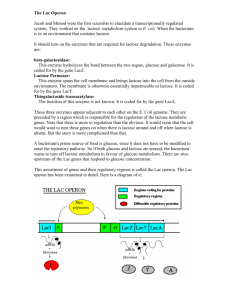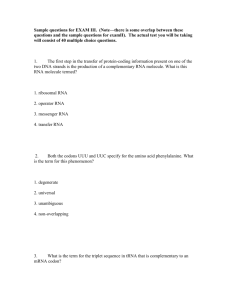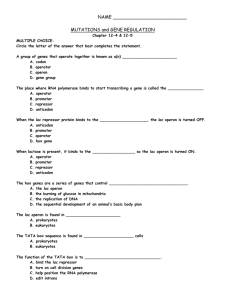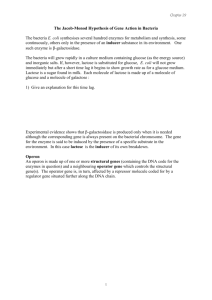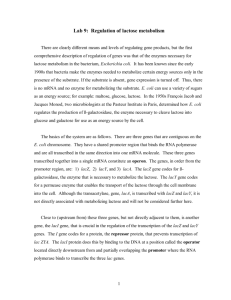13.4 Gene Regulation and Expression
advertisement
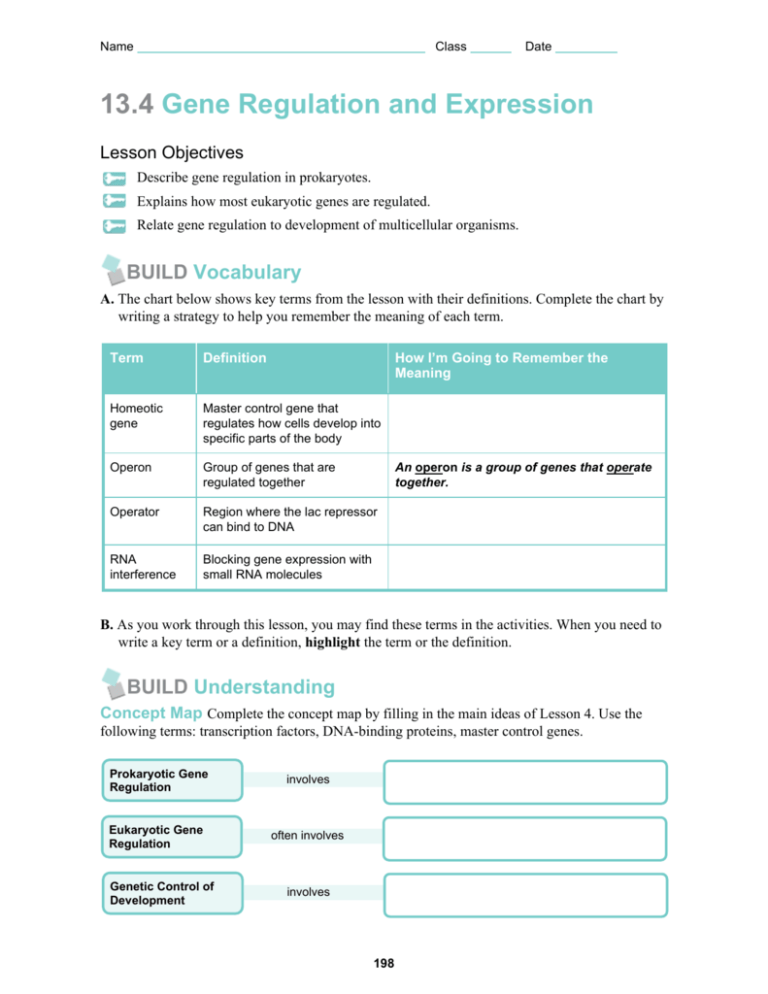
Name Class Date 13.4 Gene Regulation and Expression Lesson Objectives Describe gene regulation in prokaryotes. Explains how most eukaryotic genes are regulated. Relate gene regulation to development of multicellular organisms. BUILD Vocabulary A. The chart below shows key terms from the lesson with their definitions. Complete the chart by writing a strategy to help you remember the meaning of each term. Term Definition How I’m Going to Remember the Meaning Homeotic gene Master control gene that regulates how cells develop into specific parts of the body Operon Group of genes that are regulated together Operator Region where the lac repressor can bind to DNA RNA interference Blocking gene expression with small RNA molecules An operon is a group of genes that operate together. B. As you work through this lesson, you may find these terms in the activities. When you need to write a key term or a definition, highlight the term or the definition. BUILD Understanding Concept Map Complete the concept map by filling in the main ideas of Lesson 4. Use the following terms: transcription factors, DNA-binding proteins, master control genes. Prokaryotic Gene Regulation involves Eukaryotic Gene Regulation often involves Genetic Control of Development involves 198 Name Class Date Prokaryotic Gene Regulation DNA-binding proteins called repressors control transcription. They bind to areas of DNA called operators. They stop RNA polymerase from transcribing the genes on the DNA strand. Answer the following questions. For each question, circle the letter of the correct answer. 1. What is the function of the lac operon in E. coli? A. It regulates reproduction. B. It regulates cell division. C. It enables the bacterium to use lactose for food. D. It uses three proteins to make lactose. 2. What does the lac repressor do? A. It prevents the lac operon from working by preventing transcription. B. It makes RNA polymerase, which prevents the lac operon from working. C. It makes lactose. D. It makes glucose. 3. What happens when lactose is E. coli’s only food source? A. The presence of lactose keeps RNA polymerase from functioning. B. The presence of lactose enables the lac operon genes to function. C. The presence of lactose allows DNA to be synthesized. D. The presence of lactose makes the lac repressor go into action. 4. What does the promoter do? A. It prevents the synthesis of lactose. B. It is the place where RNA polymerase can bind to DNA and therefore start the synthesis of mRNA. C. It is the place where RNA polymerase can bind to DNA and enable the lac repressor gene to work. D. It lets the lac repressor bind to DNA. In the space below, draw what happens to the repressor when lactose is present. 199 Name Class Date Eukaryotic Gene Regulation In many eukaryotes, a short region of DNA containing the base sequence TATATA or TATAAA is known as the TATA box. The TATA box marks the beginning of a gene. It also helps position the RNA polymerase. When RNA polymerase binds in the correct position, transcription can occur. Follow the directions. 1. Label the TATA box, the gene, and the RNA polymerase in the diagram below. Direction of transcription Complete the sentences. 2. The TATA box helps 3. The TATA box marks the beginning of the bind in the correct place. . CHAPTER MYSTERY Mouse-Eyed Fly The chapter mystery involves an experiment in which scientists transplanted a mouse gene into a fruit fly. The mouse gene is involved in the formation of eyes. The fruit fly then grew eyes in odd places, such as its legs. Imagine you are writing a Web article about this experiment. To learn more about the experiment, you will interview one of the scientists. In the space below, write some questions that you might ask the scientist. One question has been done for you. • When you planned the experiment, what was your hypothesis? 200
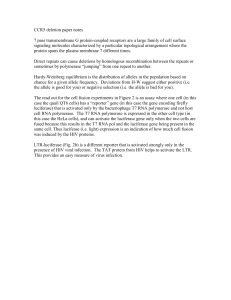
![Lac Operon AP Biology PhET Simulation[1]](http://s3.studylib.net/store/data/006805976_1-a15f6d5ce2299a278136113aece5b534-300x300.png)




